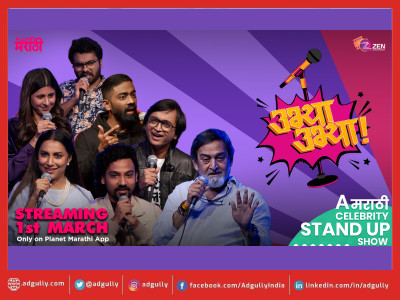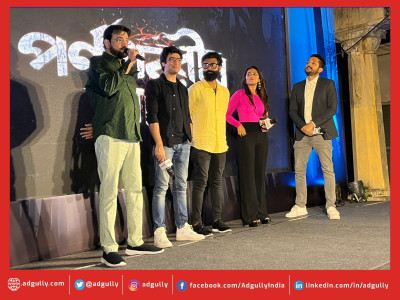Driven by regional muscle, Indian OTT can be an indomitable content force: Experts
According to a new FICCI EY analysis, the proportion of regional languages in all OTT (over-the-top) video content will quadruple from 27% in 2020 to 54% in 2024 as more streaming platforms embrace vernacular programmes and films. 69% of films released on platforms and 47% of OTT originals in 2021 were not in Hindi.
India must broaden the possibilities for regional cinema so that it can thrive in order to increase the contribution of regional content to the OTT business.
Over the years, there has been a significant transformation in Indian cinema. In terms of box office receipts and adoration from other states, who may not speak the language, regional films like ‘Sairat’ (Marathi) and ‘Baahubali’ (South Indian) are now some of the biggest examples.
India has seen a boom in regional OTT platforms in states like Maharashtra, Gujarat, Kerala, Karnataka, Andhra Pradesh-Telangana, and Tamil Nadu in recent years, particularly after COVID-19 hit us and theatres closed down.
Growth of regional content on OTT platforms
The OTT space today is a highly competitive landscape of a large library of regional content, which stands shoulder to shoulder with Hindi and English content.
Vaibhav Modi, Founder-Director of Victor Tango Entertainment, observed, “Regional cinema has successfully landed on OTT viewers’ radars, significantly paving the door for series material. Language and regional barriers have been broken during the past five years, not just in India but also internationally. Take ‘Narcos’, for example. Although the show was originally produced in Spanish, viewers need to be reminded that it was created in a different language, and not in English. The same is the case for other popular shows like ‘Money Heist’. This has made the viewer question – ‘why should my viewing radar be limited?’”
“Close to 50% of the content budgets nowadays are skewed towards regional for many of the OTT platforms. And global giants have just made inroads into regional content in the last month or so. I think this is just the beginning. We will see a large number of shows with a large variety of content with large-scale budgets coming on regional genres, specifically for the OTT platforms, factors driving growth for regional content India is a large market, there are multiple languages, we have got 28 states, if we look at TV, cinema, or other mediums of entertainment, we have a sizable chunk of consumption coming from digital content,” pointed out Karan Taurani, Senior Analyst at Elara Capital.
Factors driving growth for regional content on OTT
Regional content creators, experimenting with and pushing boundaries to tell stories across genres, is major driving force.
Revealing the reason behind the growth of regional content, Soumya Mukherjee, COO, hoichoi, said, “Over the past few years, there are certain things we have observed that we can attribute regional content’s rise to. Firstly, the lockdowns contributed and allowed audiences to explore content from various languages, and once they discovered what vernacular languages have to offer, the rise was inevitable. Another major aspect is the influx of internet and smartphones in Tier 2 and Tier 3 cities, where vernacular content is preferred , also audiences across the country want to see their culture represented on screen. So, stories from the heartland and various regional or vernacular languages are on the rise.”
Demand is the first and important factor, people are looking forward towards something in their own language. Not only that, with the help of subtitles, people are also willing to watch content from the other languages, which they probably do not understand. But they’re ready to read subtitles and understand it. So, the exploration that the consumer wants to do with content is what is the driving force. On the other hand, from the content point of view, or the content creators’ point of view, there are stories which are very unique, very novel, and very rooted, which is giving them direct relatability to their consumers. From the industry perspective, there’s a lot of internet penetration that is happening, the bandwidth and the data is so cheaply available, and in abundance, that anyone can watch anything at any moment.
OTT players are strengthening their localised entertainment strategies
While creating good content is the motive, ensuring that audiences know about it and watch it is also necessary. So, penetrating the market via effective communication and marketing strategies is a must.
Vaibhav Modi noted, “OTT content has library value, thus players need to look at hosting slates of multilingual content. The audience for shows like ‘Sacred Games’, ‘Mirzapur’, or any of these ventures would have increased if they had been produced in two or more languages. That is one perspective on the situation. The other thing is getting stories to travel between geographies. OTT platforms can gain more traction by using their data and insights to advise creators who pitch them on what stories should be told in which languages. It will help the OTT platforms be more inclusive of regional content”
According to Akshay Bardapurkar, Founder, Planet Marathi OTT, “OTT players need to be more open to stories, genres and concepts while looking at creating a strong regional content slate. Encouraging regional creators and giving a larger platform to niche and well-known regional content producers are steps one can take to strengthen their localised entertainment strategy.”
While pointing out that the OTTverse is shifting from mass viewing to personalise viewing, Avinash Mudaliar, Co-Founder and CEO, OTTplay, noted, “The content shift is moving at a fast pace to more viewers shifting to regional content over mass content. The players need to match the speed and pace up to work around more regional content that gives each consumer what they like and have more offerings to keep them enticed.”
Steps to be taken to create strong differentiation
An OTT platform is the embodiment of choice. The content and library drive subscriptions to the platform and not the other way around.
Giving his perspective on differentiation, Karan Taurani said, “In terms of steps, differentiation would be the scale and approach, the marketing, which is very important for a TV show, or for a web series, the user experience of a particular platform, how the platform is viewed by the audience. Also, they need to differentiate with the distribution strategy as well, which is there. And one more thing is pricing, because I think the regional audience is very price sensitive and massy in nature. So, OTT players have to look at that perspective as well.”
Every OTT platform has a different strategy. Speaking about hoichoi’s strategy, Soumya Mukherjee explained, “Our way to differentiate is obviously our content and our bank of films – all in a single language. Our original shows cater to genres that work with the audiences as well as explore new genres to expand the user base. While the 650+ bank of films helps attract the older demographic as well as international audience primarily.”
Future of Regional content on OTT
A multi-lingual, inclusive Indian OTT entertainment is the future. With attention spans dwindling and content from every language and region available at the audience’s fingertips, nothing is irreplaceable.
Conveying his vision of the future, Akshay Bardapurkar said, “We are at a place where we can say ‘Indian entertainment’ without referring to Hindi entertainment only. Our country is a kaleidoscope. We have multi-regional, multicultural icons, stories, languages and routes which have not yet been explored. For streaming platforms to truly represent India globally, regional content needs to be given due credit. We can be an indomitable content force given our diverse and rich landscape.”
Referring to one of the industry icons, Abhishek Jain said, “I had heard a lecture by CK Prahalad. He is a marketing guru and he talked a lot about the bottom of the pyramid. He did also mention how Regional is going to be the next global and we all can see that the bigger critical mass that any OTT platform needs is actually in the smaller pockets in the regional pockets of the country of India. So, the future scenario definitely lies in collaborating with regional OTT platforms or regional filmmakers and making content with them.”


















Share
Facebook
YouTube
Tweet
Twitter
LinkedIn